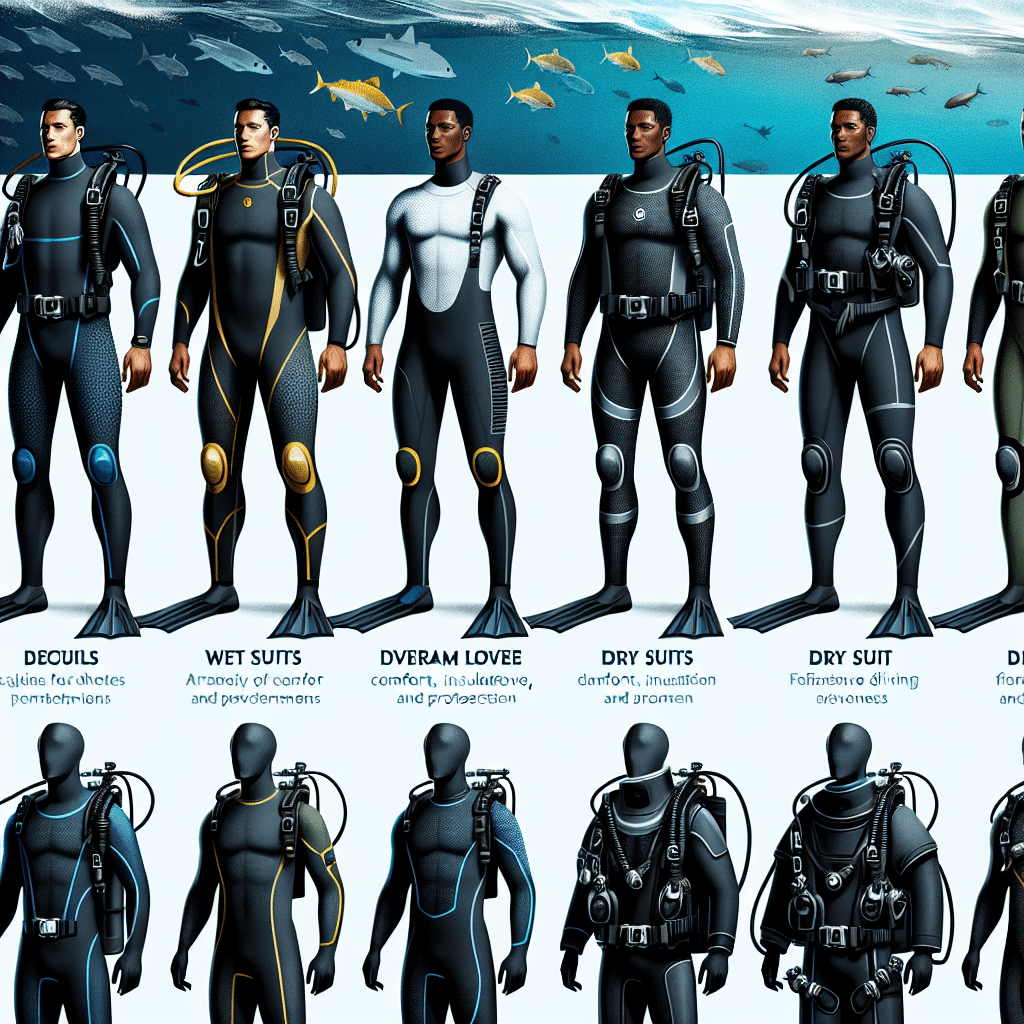Scuba diving is undoubtedly an adventure of a lifetime. It not only offers an escape to a tranquil underwater world but also exposes you to the thrilling perspective of life beneath the water’s surface. To enjoy this unique experience fully, one must be equipped with the right gear, and perhaps the most vital of these is the scuba diving suit.

Why are Scuba Diving Suits Essential?
Why do you need a scuba diving suit? The answer is quite simple: protection. The underwater realm, although captivating, can be unpredictable and potentially hazardous. The scuba diving suit serves to safeguard the diver’s body from potential dangers such as cold water temperatures, harmful sun rays, stinging sea creatures, and sharp corals.
Additionally, these suits add buoyancy, making it easier for divers to navigate underwater. They also provide a sense of comfort and ease, allowing divers to focus solely on the thrilling experience that scuba diving offers.
What are the Different Types of Scuba Diving Suits?
Now that we’ve established the critical role that scuba diving suits play, what types of diving suits are available? There are primarily two types: wetsuits and drysuits. Both have their unique features and advantages, being designed for different diving conditions and environments.
1. Wetsuits
Wetsuits are made from neoprene, a type of synthetic rubber that provides excellent insulation against cold water. The suit allows a thin layer of water to enter, which your body heat then warms up, forming an insulating layer between your skin and the surrounding cold water.
There are different types of wetsuits, including full suits, spring suits, and dive skins. The full suits cover your whole body, making them suitable for cooler waters. Spring suits, on the other hand, are designed for warmer waters, while dive skins are for tropical waters, offering protection from the sun and minor scrapes.
2. Drysuits
As the name suggests, drysuits are designed to keep the diver completely dry. They are ideal for very cold water and extended dives. A drysuit has seals at the neck and wrists, and it’s usually made from foam neoprene, crushed neoprene, vulcanized rubber, or heavy-duty nylon.
What Should You Consider When Choosing a Scuba Diving Suit?
So, how do you go about picking the right scuba diving suit? Your choice will depend on several factors:
1. Diving Environment
The first thing to consider is the temperature of the water you plan to dive in. For warmer water, spring suits or dive skins will suffice. For colder waters, opt for full suits or drysuits.
2. Suit Fit
Comfort is crucial when under the water. Therefore, ensure that the suit you choose fits perfectly. It should be snug but not restrict your movement.
3. Durability
Quality matters when it comes to choosing a scuba diving suit. Investing in a high-quality suit will not only provide better insulation and protection but will also last longer.
In conclusion, a scuba diving suit is a crucial piece of gear that can make or break your underwater adventure. Knowing what types of suits are available, understanding the purpose they serve, and knowing what factors to consider when choosing a suit, will ensure you are well prepared for your underwater expedition. Happy diving!



